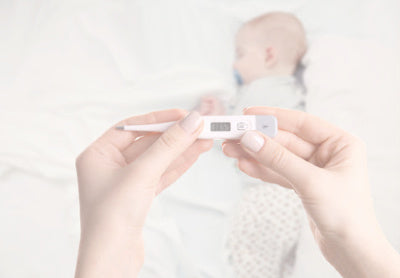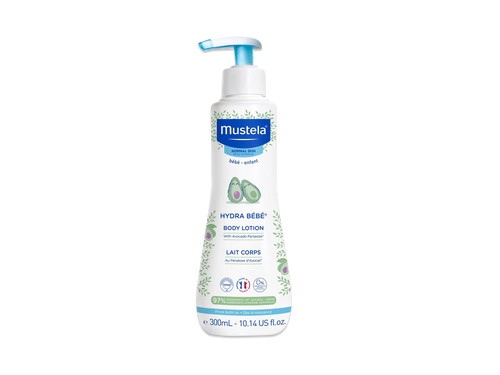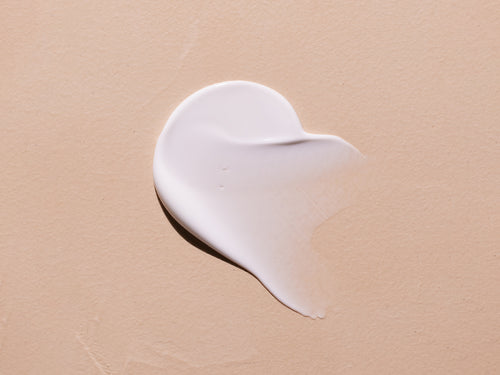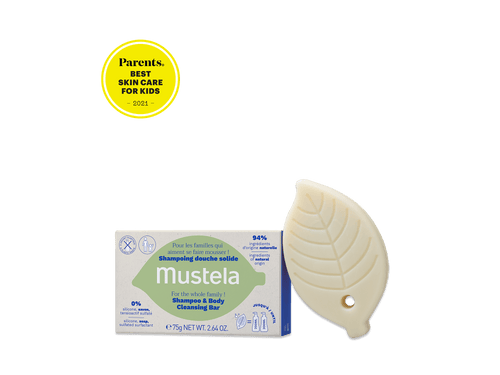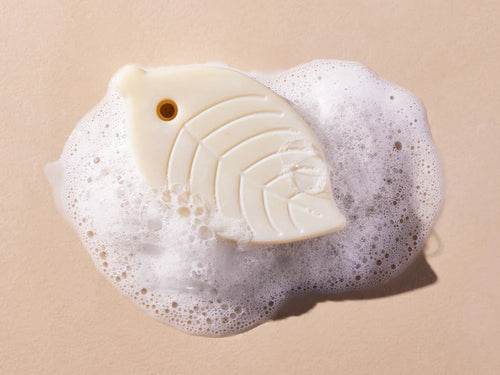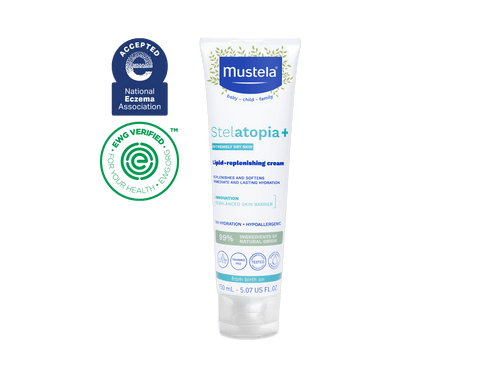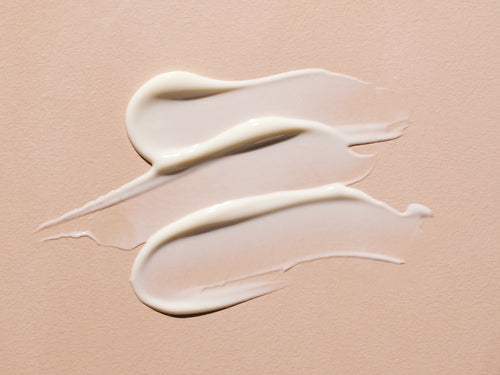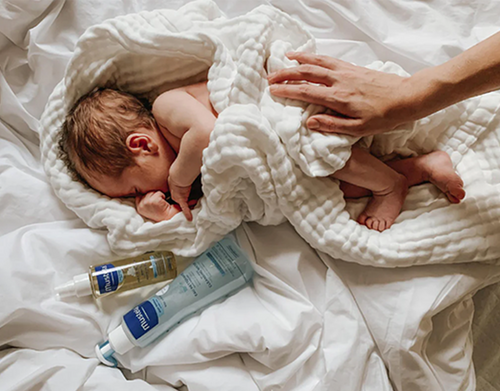When your little one is sick, you’d go to the moon and back to make them feel better! But it’s not always easy to know how to best care for your baby, especially when they have a fever and you’re not sure exactly what’s causing their temperature to rise.
If you want to know what to do to take care of your little one when they’re running a fever, you’re in the right place. In this article, the experts at Mustela explain what a baby’s normal temperature is, what causes a fever, and how to care for your sick baby.
What Is A Baby’s Normal Temperature?
A fever means that your baby’s temperature is higher than it should be. So in order to know that they have a fever, you need to know what a normal temperature is and what temperature constitutes a baby fever.
In both old and young, body temperature varies a bit based on several factors. The time of day and season of the year, for example, can slightly affect temperature. Your baby’s temperature might also be higher than usual if they’ve been running or if they just got an immunization.
Regardless, a normal temperature for a baby or child is around 97.5°F, but anything up to 99°F is generally OK.
That being said, a temperature over 99°F is usually considered a fever. But all of these numbers can vary a bit depending on the type of thermometer you use (and what part of your baby’s body you use it on).
Let’s talk briefly about how to take your baby’s temperature to get the most accurate reading.
How To Take Your Baby’s Temperature
Some parents can tell if their child has a fever by placing a hand on their baby’s forehead or back. This is a great parenting superpower!
With this method, you can get a rough idea of whether or not your baby is feverish, but the only way to check their actual temperature is by using a good, old-fashioned (or not so old-fashioned) thermometer.
To get the most accurate reading, take your baby’s temperature in their bottom (this is called rectally) using a digital thermometer. Another accurate way to measure your little one’s temperature is with a temporal artery thermometer, which you slide across their forehead.
Both of these are good options for any age, even newborns. If you’ve used one of these methods and your baby’s temperature is higher than 99°F, then they probably have a fever.
Of course, you can also take your child’s temperature in their mouth (orally) or under their armpit (axillary), although these methods aren’t quite as accurate as checking temperature rectally or with a temporal artery thermometer.
The mouth and armpit show a temperature that’s a bit lower. For example, if your baby’s rectal temperature is 98°F, their armpit temperature might be around 97.2°F.
Lastly, if your baby is over six months old, you can take their temperature with a digital ear thermometer.
What Causes A Baby Fever?
Your baby’s fever is not a sickness in itself. Rather, it’s an immune response and a symptom of something else.
A fever means that your child’s little body is hard at work fighting off an infection — a virus like a cold or flu or a bacterial infection, such as a sinus infection or bladder infection.
The bottom line: your baby having a fever is not necessarily a bad thing, and you can usually treat and monitor their fever at home.
When should you call the doctor? If your baby is under three months old and they’ve developed a fever, seek medical help right away. Fevers in young babies can be dangerous.
If your little one is between three and six months old, call your doctor if they have a temperature of 102°F and seem sick or if they have a temperature higher than 102°F. If your baby is six months to two years old, see a doctor for a fever over 102°F that lasts for more than 24 hours (with no other symptoms).
And, finally, if your child is over two years old, consult your pediatrician if the fever lasts more than three days. Regardless of age, if your little one’s fever climbs over 102°F, talk to your doctor.
How To Treat Your Baby’s Fever
Caring for a baby with a fever is all about keeping them comfortable and hydrated and bringing their temperature down if it gets too high. Here are seven ways to do just that!
1) Keep Your Baby Hydrated
Give your little one extra fluids to keep them hydrated and help their body cool down.
If your baby is on solid foods, try diluted juice, water, yogurt, popsicles, or an electrolyte solution. For babies that are still only breastfeeding, this simply means continuing to breastfeed.
Expert tip: stay comfortable while nursing with Mustela’s Nursing Comfort Balm. This soothing nipple cream is fragrance-free and safe for both mom and baby!
2) Dress Your Baby In Cool Clothing
Unless your little one is cold and shivering, keep them in light clothing that will keep them cool, and don’t dress them in too many layers.
3) Put Your Little One In Soothing Pajamas
When you put your baby to bed, dress them in light, cotton pajamas that won’t make them too hot. Mustela’s Stelatopia Skin Soothing Pajamas are 100% cotton to keep your baby cool and comfy the whole night.
An extra tip for parents of eczema-prone little ones: our pajamas are specifically designed for babies and toddlers with eczema-prone skin. Using microcapsule technology, they deliver skin-soothing moisture to your baby’s skin throughout the night.
4) Stay In The Shade
If you’re taking your feverish baby outside during warm months, stay in the shade and try to keep your little one from running around too much. And, just as a reminder, whenever they’re in the sun, protect their delicate skin with a sun hat and sunscreen.
Also, keep the house and their room cool, but not cold. If it’s stuffy, try a fan.
5) Give Medicine To Lower Your Baby’s Temperature
As we mentioned earlier, a little fever in itself is not a bad thing and means that your baby’s immune system is fighting something off.
However, if your little one’s fever gets a bit higher (usually over 102°F), they’re shivering, or if they seem uncomfortable, acetaminophen or ibuprofen will help lower their temperature and make them feel better.
An important note: Always ask your doctor first if you should give one of these medicines to your feverish child and if your baby is old enough to take them. And if you do give your little one a spoonful of medicine, make sure you’re giving them the right dosage.
One more thing before moving on from this topic: don’t give your baby or child aspirin as it can cause Reye’s syndrome, which is very dangerous.
6) Give Your Baby A Bath
If you’re trying to lower your baby’s temperature, give them a bath after they’ve taken their medicine.
If your little one is old enough to sit comfortably in a tub, put them in a bath with lukewarm water (not too cool and not too warm). Gently sponge water over their body, and make sure you’re using bathtime products that will be gentle on their delicate skin and formulated for their specific skin type.
Between Foam Shampoo For Newborns, Bath Oil, and Multi-Sensory Bubble Bath for kids of all ages, Mustela’s gentle and eco-friendly products have you and your little one covered.
If your baby is small, you may want to skip the tub and give them a sponge bath with a washcloth. Wet a washcloth with lukewarm water (don’t use cold water) and place it on your baby’s stomach, legs, underarms, and behind their neck.
When the washcloth starts to cool, take it off and wet it with lukewarm water again. Continue sponging for 15 or 20 minutes.
7) Keep Your Baby Home
Hopefully, your baby is still feeling good and acting like themselves even when they’re running a fever. Even still, there are two reasons to keep them home.
First, stay home so your little one can get some rest and their body can heal. Second, if your child has a fever, they’re contagious. Do everyone a favor by keeping them home from school, daycare, or playdates.
Give Your Baby Extra TLC
At the end of the day, caring for your baby’s fever is about making them comfortable and keeping their temperature from getting too high. You know your baby best, so trust your instincts.
Take your baby to the doctor if you think they’re very sick or their fever is getting too high. Otherwise, hunker down at home and show your baby a little extra TLC!
Follow our seven tips and keep your baby comfy with Stelatopia Skin Soothing Pajamas and your little one will be on the mend in no time!


